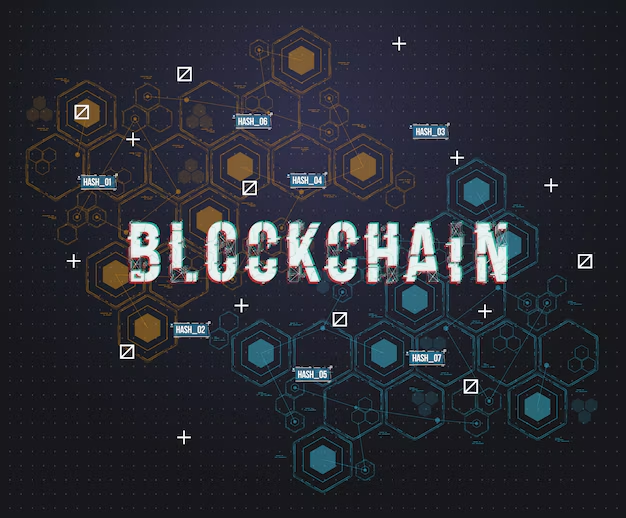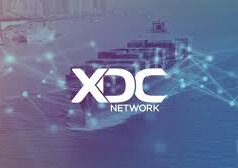Blockchain technology, once just the backbone of Bitcoin, has evolved into a revolutionary force tackling real-world challenges across industries. From streamlining finance to securing supply chains, its decentralized, transparent, and immutable nature is already delivering solutions—and its potential for the future is even more exciting. Let’s explore how blockchain is addressing today’s pain points and what it promises to solve in the years ahead, all while keeping things human, relatable, and grounded in real impact.
Tackling Trust Issues in Finance
One of blockchain’s biggest wins is in finance, where trust—or the lack of it—has long been a problem. Traditional banking relies on centralized institutions, which can be slow, costly, and prone to errors or fraud. Blockchain’s decentralized ledger cuts through this. By enabling peer-to-peer transactions without intermediaries, it reduces costs and speeds things up. For example, cross-border payments, which can take days and incur hefty fees, are now near-instant with blockchain-based platforms like Ripple or Stellar. In 2024, Ripple processed $2.7 trillion in transactions, slashing costs by up to 60% compared to traditional systems.
This isn’t just about speed. Blockchain’s transparency ensures every transaction is recorded immutably, making fraud nearly impossible. Smart contracts—self-executing agreements coded on the blockchain—automate processes like loan approvals or insurance payouts, eliminating human error and bias. For instance, Ethereum-based DeFi platforms like Aave have lent over $50 billion without traditional banks, empowering users globally, especially in underbanked regions.
Securing Supply Chains with Transparency
Supply chain inefficiencies—think delays, counterfeiting, or lack of traceability—cost businesses billions annually. Blockchain is changing that by creating transparent, tamper-proof records. Every step of a product’s journey, from raw material to store shelf, can be logged on a blockchain, accessible to all stakeholders. IBM’s Food Trust, used by Walmart, tracks food products in seconds, not days, ensuring safety and reducing waste. In 2023, it helped trace 627 million pounds of food, cutting recall times by 90%.
This transparency also combats counterfeiting. Luxury brands like LVMH use blockchain to verify product authenticity, giving consumers confidence and protecting brand value. In developing nations, blockchain ensures ethical sourcing—Everledger, for example, tracks diamonds to confirm they’re conflict-free. As global trade grows, blockchain’s ability to streamline and secure supply chains is a game-changer.
Empowering Data Ownership and Privacy
In a world where tech giants harvest and monetize personal data, blockchain offers a way to take back control. Centralized platforms like social media or cloud services are vulnerable to breaches—Equifax’s 2017 hack exposed data of 147 million people. Blockchain’s decentralized structure distributes data across nodes, making it nearly impossible to hack. Projects like Filecoin and Arweave enable decentralized storage, letting users control their data and earn tokens for sharing storage space.
Beyond security, blockchain enables true data ownership. Self-sovereign identity (SSI) systems, like those built on Hyperledger, let individuals manage their digital identities without relying on third parties. In 2025, pilots in places like Estonia are using SSI for secure e-voting and healthcare records, ensuring privacy and reducing bureaucracy. Looking ahead, blockchain could power a “data economy” where users sell access to their data on their terms, flipping the script on Big Tech.
Streamlining Governance and Voting
Corruptible or inefficient governance systems erode public trust. Blockchain’s transparency and immutability make it a powerful tool for fairer processes. In voting, blockchain can ensure tamper-proof elections. Voatz, a blockchain-based voting platform, has been piloted in U.S. local elections, recording votes on an immutable ledger to prevent fraud. A 2024 trial in West Virginia saw 98% voter satisfaction, with no reported security issues.
Beyond elections, blockchain can streamline bureaucracy. Smart contracts automate tasks like property transfers or tax collection, reducing red tape. Dubai’s government aims to put all transactions on blockchain by 2030, projecting savings of $1.5 billion annually. In the future, blockchain could enable decentralized autonomous organizations (DAOs) to govern communities or even cities, giving stakeholders direct control over decisions.
Future Horizons: Healthcare and Universal Access
Looking forward, blockchain’s potential in healthcare is massive. Medical records are often scattered across systems, leading to errors or delays. Blockchain-based platforms like MediBloc unify patient data, giving doctors secure, real-time access while patients control who sees their information. In 2024, MediBloc’s platform was used by 200 hospitals in South Korea, improving care coordination and reducing costs by 15%.
Blockchain could also democratize healthcare access. In developing regions, where millions lack insurance, tokenized systems could incentivize care providers to serve underserved communities. For example, a future blockchain platform might reward doctors with tokens for treating patients in remote areas, funded by global health organizations. This could transform healthcare equity by 2030, especially in Africa and South Asia.
Revolutionizing Energy and Sustainability
Energy markets are another frontier. Traditional grids are centralized and inefficient, often failing to integrate renewable sources effectively. Blockchain enables peer-to-peer energy trading, where households with solar panels sell excess power directly to neighbors. Power Ledger, an Australian platform, facilitated $10 million in energy trades in 2024, cutting costs and emissions. In the future, blockchain could manage decentralized microgrids, ensuring resilient, sustainable energy systems in disaster-prone areas.
Blockchain also supports carbon credit markets. Verifying emissions reductions is tricky, but blockchain’s transparency ensures credits are legitimate. In 2025, platforms like Toucan Protocol tokenized 20 million tons of CO2 offsets, making it easier for companies to meet net-zero goals. By 2035, blockchain could underpin global carbon markets, driving accountability in climate action.
Scalability and Adoption
Blockchain isn’t a magic bullet. Scalability remains a hurdle—Bitcoin processes just 7 transactions per second compared to Visa’s 24,000. Layer-2 solutions like Lightning Network and Ethereum’s rollups are improving this, but widespread adoption requires faster, cheaper networks. Energy consumption is another concern, though proof-of-stake chains like Ethereum (post-2022) use 99.9% less energy than Bitcoin’s proof-of-work.
Adoption faces cultural and regulatory barriers. Governments wary of decentralization may impose restrictions, as seen in China’s crypto crackdowns. Educating businesses and consumers about blockchain’s benefits is also critical—many still associate it solely with crypto speculation. Overcoming these hurdles will require collaboration between developers, policymakers, and industries.
A Decentralized Future
Blockchain’s potential is vast, but its true impact lies in execution. By 2030, we could see blockchain powering universal digital IDs, enabling billions in the Global South to access banking and services. Supply chains could become fully transparent, ending labor exploitation and environmental harm. DAOs might govern everything from startups to city budgets, democratizing decision-making.
For individuals, blockchain offers empowerment—control over data, wealth, and even governance. For businesses, it’s about efficiency, trust, and new revenue streams. The technology is still young, but its trajectory is clear: a world where centralized gatekeepers lose power, and individuals gain it.
The challenges are real, but so are the opportunities. Blockchain is already solving problems that have plagued industries for decades, and its future applications could redefine how we live, work, and interact. It’s not just tech—it’s a movement toward a fairer, more transparent world. The question isn’t whether blockchain will shape the future, but how quickly we’ll embrace it.
Sources:
- CoinDesk, “How Blockchain Is Revolutionizing Finance,” www.coindesk.com, July 2024
- IBM, “Food Trust: Transforming Supply Chains with Blockchain,” www.ibm.com, 2023
- Forbes, “Blockchain and Data Privacy: The Rise of Self-Sovereign Identity,” www.forbes.com, March 2025
- Voatz, “Blockchain Voting: Securing Democracy,” www.voatz.com, 2024
- MediBloc, “Annual Report on Blockchain in Healthcare,” www.medibloc.com, 2024
- Power Ledger, “Decentralized Energy Trading: 2024 Impact Report,” www.powerledger.io
- Toucan Protocol, “Tokenizing Carbon Credits,” www.toucan.earth, January 2025
- Ripple, “2024 Transaction Report,” www.ripple.com
- Aave, “DeFi Lending Statistics,” app.aave.com, August 2025
- World Economic Forum, “Blockchain for Supply Chain Transparency,” www.weforum.org, 2023



























